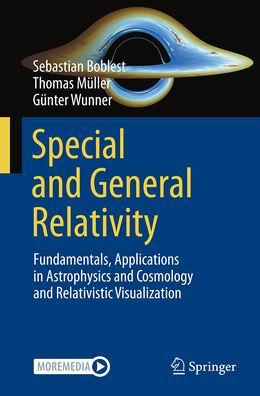The authors put special emphasis on relativistic visualization. Two chapters give an overview of various visualization techniques in special and general relativity. Examples of relativistic visualization make the predictions of relativity, which so blatantly seem to contradict everyday experience, more tangible and intelligible. The resulting figures and accompanying videos support the understanding of the topics covered in the text. The videos are accessible also via the Springer Nature More Media App.
This edition is the translation and extension of a textbook of the authors written in German. It also includes more recent developments in astrophysics and cosmology, such as the detection and observation of gravitational waves, or the Hubble controversy.
The book is intended for students of physics and related study courses who would like to get an overview of both the theory of relativity and its areas of application. However, the interested layperson, too, will gain a new and deeper insight into relativity and astrophysics.
The authors put special emphasis on relativistic visualization. Two chapters give an overview of various visualization techniques in special and general relativity. Examples of relativistic visualization make the predictions of relativity, which so blatantly seem to contradict everyday experience, more tangible and intelligible. The resulting figures and accompanying videos support the understanding of the topics covered in the text. The videos are accessible also via the Springer Nature More Media App.
This edition is the translation and extension of a textbook of the authors written in German. It also includes more recent developments in astrophysics and cosmology, such as the detection and observation of gravitational waves, or the Hubble controversy.
The book is intended for students of physics and related study courses who would like to get an overview of both the theory of relativity and its areas of application. However, the interested layperson, too, will gain a new and deeper insight into relativity and astrophysics.

Special and General Relativity: Fundamentals, Applications in Astrophysics and Cosmology and Relativistic Visualization
645
Special and General Relativity: Fundamentals, Applications in Astrophysics and Cosmology and Relativistic Visualization
645Paperback

Product Details
| ISBN-13: | 9783662713310 |
|---|---|
| Publisher: | Springer Berlin Heidelberg |
| Publication date: | 12/14/2025 |
| Pages: | 645 |
| Product dimensions: | 6.10(w) x 9.25(h) x (d) |
